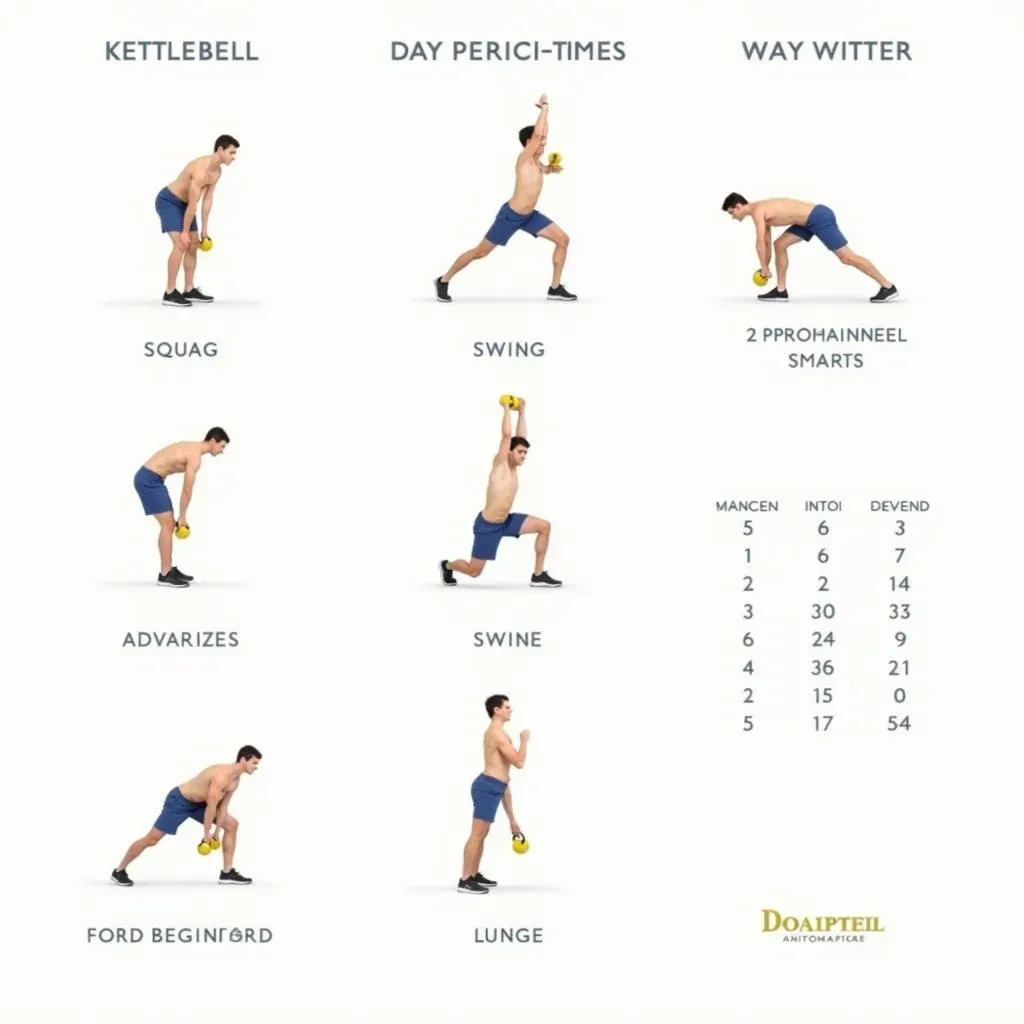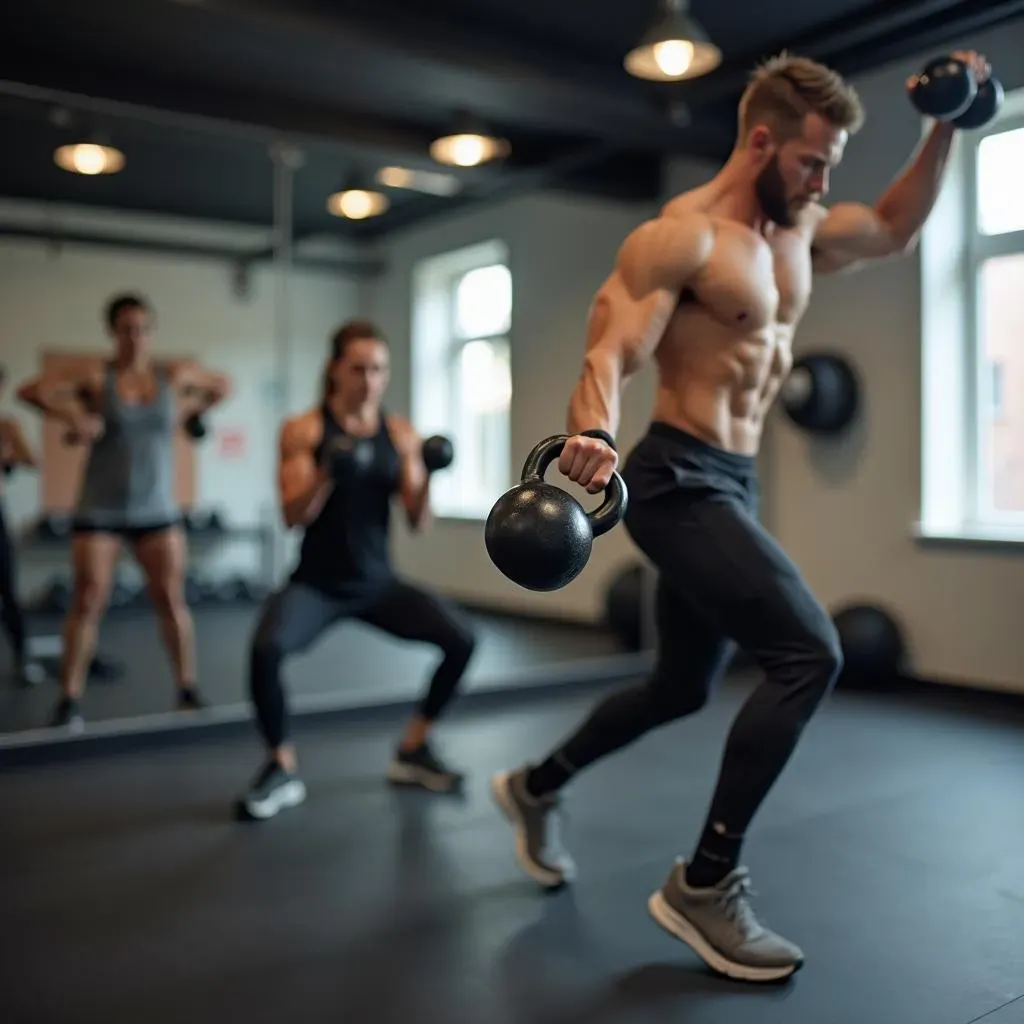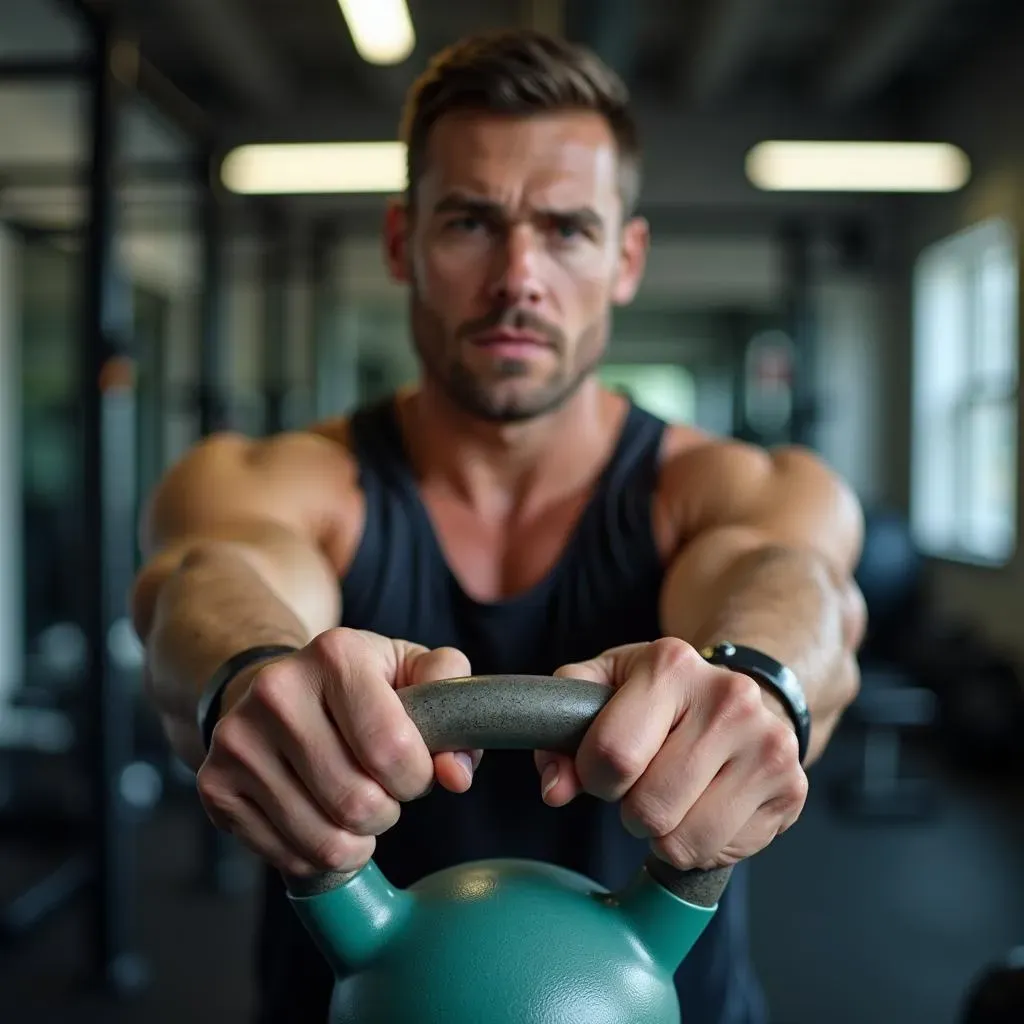Table of Contents
Ready to ditch boring leg days and discover a fun way to build serious lower body strength? Then you've come to the right place! This isn't your typical gym routine. We're talking about using kettlebells to sculpt powerful legs, improve your balance, and get a killer workout all at the same time. Forget those clunky machines – kettlebells are your ticket to functional fitness that translates to real-world strength. In this article, we'll walk you through the basics of kettlebell training for legs. You'll learn key exercises like swings, goblet squats, and lunges that are way more effective than endless reps on a leg press. We'll also show you how to create your own "leg workout with kettlebells" that fits your fitness level. Whether you're a beginner or a seasoned lifter, get ready to unlock the secret to strong, sculpted legs with the power of the kettlebell. So, let's get started and make those legs burn!
Kettlebell Training Basics for Legs

Kettlebell Training Basics for Legs
Why Kettlebells for Legs?
Okay, so you're curious about using kettlebells for leg day? Awesome! Forget those boring leg extensions. Kettlebells bring a whole new level of fun and function to your workouts. They're not just weights; they're tools for building real-world strength. Unlike machines that isolate muscles, kettlebells force your body to work as a unit. This means you’re not just building leg muscles; you're also improving your core stability, balance, and coordination. Kettlebells mimic natural movements like squatting, swinging, and lunging, making your body stronger for everyday tasks. Think of it like this: you're not just lifting weight, you're training your body to move better. And who doesn’t want that?
Choosing the Right Kettlebell
Before you start swinging around like a maniac, let’s talk about picking the right kettlebell. It’s not a one-size-fits-all situation, and using a weight that's too heavy or too light won't get you the results you want. For beginners, I recommend starting with a lighter weight to focus on proper form. Ladies, think around 8-12 kg, and guys might start around 12-16 kg. It’s always better to start lighter and gradually increase the weight as you get stronger. Pay attention to how your body feels during the exercises. If you're struggling to maintain good form, the weight is too heavy. It's not about ego; it's about building a strong foundation. Remember, quality over quantity, always.
Fitness Level | Recommended Kettlebell Weight (Women) | Recommended Kettlebell Weight (Men) |
|---|---|---|
Beginner | 8-12 kg | 12-16 kg |
Intermediate | 12-16 kg | 16-20 kg |
Advanced | 16+ kg | 20+ kg |
The Importance of Proper Form
Alright, you've got your kettlebell, now let’s talk form. This is seriously the most important part. Good form is like the secret sauce that makes your workouts effective and safe. If you are doing a squat, make sure you push your hips back, keep your chest up, and don’t let your knees cave inward. When you are doing swings, it's all about using your hips to generate the power – not your arms. Think of your arms as ropes, and your hips as the engine. I know it can be tempting to rush through your reps, but trust me, it's better to do fewer reps with perfect form than a bunch with sloppy technique. If you're unsure, watch some videos, or even better, get a few sessions with a qualified trainer. It's an investment that will pay off big time, and it's the best way to prevent injuries.
Effective Kettlebell Leg Exercises

Effective Kettlebell Leg Exercises
Kettlebell Swings: The King of Kettlebell Moves
Alright, let’s get into the good stuff – the actual exercises! First up, we have the kettlebell swing. If there’s one move you absolutely MUST master, it’s this one. It's not just a leg exercise; it's a full-body blast. Think of it as a hinge, not a squat. The power comes from your hips snapping forward, not your arms. Your arms are just along for the ride. When you perform the swing correctly, you’ll feel it in your glutes, hamstrings, and core. It's like a dance of controlled power, and it’s incredibly effective for building strength and burning calories. Start with a lighter weight to get the hang of the movement, and gradually increase it as you get stronger. Trust me, once you nail the swing, you’ll feel like a total boss.
Goblet Squats: Your Squat BFF
Next up, we have the goblet squat, which is like the friendly cousin of the regular squat. Hold the kettlebell close to your chest, like you're giving it a hug. This position helps you maintain an upright posture and engage your core. As you squat down, focus on keeping your chest up and pushing your hips back. Don’t let your knees cave inward. It’s a great exercise for beginners because the kettlebell acts as a counterweight, helping you get into the correct position. Goblet squats target your quads, glutes, and core. It's also a great way to improve your overall squat mechanics and build a solid foundation for heavier lifts. If you’re doing squats with no weight, you should start doing goblet squats instead, you’ll feel the difference right away.
Exercise | Primary Muscles Worked | Why It's Effective |
|---|---|---|
Kettlebell Swings | Glutes, Hamstrings, Core | Builds power, burns calories, full-body workout |
Goblet Squats | Quads, Glutes, Core | Improves squat form, builds lower body strength |
Lunges and Variations: Embrace the Challenge
Now, let’s talk about lunges, which are like the spicy salsa of leg exercises. You can do them in so many ways with a kettlebell. Think of regular lunges, walking lunges, and even reverse lunges. Each variation will challenge your legs in slightly different ways. For example, you can hold the kettlebell in the goblet position for added weight, or you can hold it in a racked position to engage your core even more. Lunges are fantastic for improving balance, coordination, and unilateral strength (that means working one leg at a time). So, if you are looking to fix any imbalances in your legs, lunges should be your go-to exercise. They’re also great for targeting your quads, glutes, hamstrings, and calves. And, let’s be honest, they make your legs look awesome, too.
Putting Together Your Kettlebell Leg Workout

Putting Together Your Kettlebell Leg Workout
Designing Your Workout: It's All About Balance
Alright, so you’ve got the moves down, but how do you put it all together? Well, think of your workout like a recipe. You don't just throw a bunch of ingredients together and hope for the best. Instead, you need a plan. A good kettlebell leg workout should include a mix of different exercises that target all the major muscle groups in your lower body. Start with some swings to warm up your muscles and get your heart rate up. Then, move into some squats and lunges to build strength and endurance. Remember, it's not about going as hard as you can every time. It's about consistency and focusing on proper form. You can also mix in some bodyweight exercises like jump squats and glute bridges to add some extra spice. And don't forget to listen to your body; rest when you need to, and don't push yourself too hard, especially when you are starting. It's a marathon, not a sprint.
Sample Kettlebell Leg Workout
Okay, here’s a sample workout plan to get you started. Remember, this is just a guideline, so feel free to adjust it to fit your own fitness level. Begin with a 5-minute warm-up, like light cardio and dynamic stretches. Then, perform 3 rounds of the following exercises: 10 kettlebell swings, 8 goblet squats, 8 lunges per leg, and 10 glute bridges. Between each round, rest for about 60 seconds. After you finish all the rounds, cool down with some static stretches. You can also adjust the reps and rounds as you get stronger. For instance, you can increase the reps to 12 or 15 or add an extra round if you feel like it. The key is to challenge yourself, but not to overdo it. Remember, it's okay to modify the exercises to suit your needs. If you can't do a full lunge, do a half lunge. If you can't do a full swing, do a hip hinge with no swing. It's all about progress, not perfection.
Exercise | Reps | Sets |
|---|---|---|
Kettlebell Swings | 10 | 3 |
Goblet Squats | 8 | 3 |
Lunges (per leg) | 8 | 3 |
Glute Bridges | 10 | 3 |
Progression and Consistency: The Key to Success
Now, let’s talk about progression. It's not enough to just do the same workout every time. Your body will adapt, and you’ll eventually stop seeing results. That’s why it’s essential to gradually increase the difficulty of your workouts. You can do this in a few ways. You can increase the weight of your kettlebell, add more reps or sets, reduce rest times, or try more challenging variations of the exercises. The important thing is to keep challenging yourself. But remember, consistency is just as important as progression. It's better to do a little bit every week than to go all out once and then give up. Aim for at least 2-3 kettlebell workouts per week, and make sure you are getting enough rest and recovery. Consistency is not always the most exciting part of fitness, but it's the most important. It’s like the foundation of a building. If your foundation isn't strong, your building will eventually crumble.